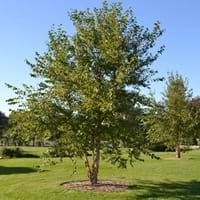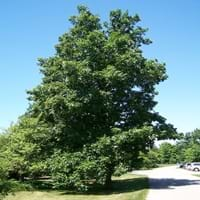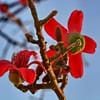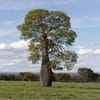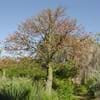Life Span
Perennial
Perennial
Origin
Mid-Atlantic United States, Southeastern United States, Central United States, South-Central United States
Northeastern United States, Mid-Atlantic United States, Southeastern United States, Central United States, Canada
Types
not available
Northern shagbark hickory, Southern shagbark hickory
Number of Varieties
Not Available
Habitat
bottomlands, Depression on prairies, ditches, Floodplains, Riverbanks, stream banks, Swamps
Woodland Garden Canopy
USDA Hardiness Zone
4-9
4-8
Sunset Zone
1a, 1b, 2a, 2b, 3a, 3b, 4, 5, 6, 7, 8, 9, 10, 11, 12, 13, 14, 15, 16, 17, 18, 19, 20, 21, 22, 23, 24
Not Available
Habit
Oval or Rounded
Oval or Rounded
Flower Color
Yellow, Brown
Not Available
Flower Color Modifier
Bicolor
Bicolor
Fruit Color
Black
Not Available
Leaf Color in Spring
Green, Light Green
Not Available
Leaf Color in Summer
Green, Light Green
Not Available
Leaf Color in Fall
Yellow, Light Yellow, Tan
Not Available
Leaf Color in Winter
Not Available
Not Available
Leaf Shape
Oval with a pointed tip and fine teeth along their edges
Pinnate
Plant Season
Spring, Summer, Fall, Winter
Spring, Summer, Fall
Sunlight
Full Sun, Partial Sun
Full Sun
Type of Soil
Clay, Loam, Sand
Loam, Sand
The pH of Soil
Acidic, Neutral
Acidic, Neutral
Soil Drainage
Average
Well drained
Bloom Time
Spring
Not Available
Tolerances
Wet Site, Pollution, Soil Compaction
Not Available
Where to Plant?
Ground
Ground
How to Plant?
Seedlings
Seedlings
Plant Maintenance
Low
Medium
Watering Requirements
Requires a lot of watering, Requires regular watering
Average Water Needs
In Summer
Lots of watering
Lots of watering
In Spring
Moderate
Moderate
In Winter
Average Water
Average Water
Soil pH
Acidic, Neutral
Acidic, Neutral
Soil Type
Clay, Loam, Sand
Loam, Sand
Soil Drainage Capacity
Average
Well drained
Sun Exposure
Full Sun, Partial Sun
Full Sun
Pruning
Prune in the late winter or spring, Remove dead or diseased plant parts, Shape and thin as needed
Remove damaged leaves, Remove dead branches, Remove dead leaves
Fertilizers
All-Purpose Liquid Fertilizer, No need to fertilize every year
Apply 10-10-10 amount
Pests and Diseases
Aphids, Red blotch, Sawfly Larvae
Leaf spot, Powdery mildew, Trunk Rot, Verticillium Wilt
Plant Tolerance
Pollution, Soil Compaction, Wet Site
Drought
Flowers
Showy
Insignificant
Flower Petal Number
Not Available
Not Available
Foliage Texture
Medium
Not Available
Foliage Sheen
Matte
Not Available
Attracts
Not Available
Mice, Red and Gray Squirrels
Allergy
Asthma
breathing problems, Mouth itching, Sore Throat, Swelling, Throat itching
Aesthetic Uses
Showy Purposes
Not Used For Aesthetic Purpose
Beauty Benefits
Not Available
Moisturizing
Environmental Uses
Erosion control, Wildlife
Air purification
Medicinal Uses
No Medicinal Use
Analgesic, Antirheumatic
Part of Plant Used
Whole plant
Sap, Seeds
Other Uses
used for making roof trusses, poles, joists, piles, Used in construction, Used in Furniture
Used as an excellent fuel, Used in pies, cakes, Used to make yellow dye, used to prepare nut milk
Used As Indoor Plant
No
No
Used As Outdoor Plant
Yes
Yes
Garden Design
Feature Plant, Shade Trees
Edible, Shade Trees
Botanical Name
BETULA nigra
CARYA ovata
Common Name
River Birch
Shagbark Hickory
In Hindi
River Birch
Shagbark Hickory
In German
Fluss Birch
Shagbark Hickory
In French
Birch river
Caryer ovale
In Spanish
river Birch
Shagbark Hickory
In Greek
ποταμός Birch
Shagbark Hickory
In Portuguese
river Birch
Shagbark Hickory
In Polish
Rzeka Birch
ORZESZNIK PIĘCIOLISTKOWY
Phylum
Magnoliophyta
Magnoliophyta
Class
Magnoliopsida
Magnoliopsida
Order
Fagales
Juglandales
Family
Betulaceae
Juglandaceae
Clade
Angiosperms, Eudicots, Rosids
Angiosperms, Eudicots, Rosids
Tribe
Not Available
Juglandeae
Subfamily
Not Available
Juglandoideae
Number of Species
Not Available
Not Available
Importance of River Birch and Shagbark Hickory
Want to have the most appropriate plant for your garden? You might want to know the importance of River Birch and Shagbark Hickory. Basically, these two plants vary in many aspects. Compare River Birch and Shagbark Hickory as they differ in many characteristics such as their life, care, benefits, facts, etc. Every gardener must at least have the slightest clue about the plants he wants to plant in his garden. Compare their benefits, which differ in many ways like facts and uses. The medicinal use of River Birch is No Medicinal Use whereas of Shagbark Hickory is Analgesic and Antirheumatic. River Birch has beauty benefits as follows: Not Available while Shagbark Hickory has beauty benefits as follows: Not Available.
Compare Facts of River Birch vs Shagbark Hickory
How to choose the best garden plant for your garden depending upon its facts? Here garden plant comparison will help you to solve this query. Compare the facts of River Birch vs Shagbark Hickory and know which one to choose. As garden plants have benefits and other uses, allergy is also a major drawback of plants for some people. Allergic reactions of River Birch are Asthma whereas of Shagbark Hickory have breathing problems, Mouth itching, Sore Throat, Swelling and Throat itching respectively. Having a fruit bearing plant in your garden can be a plus point of your garden. River Birch has no showy fruits and Shagbark Hickory has no showy fruits. Also River Birch is not flowering and Shagbark Hickory is not flowering . You can compare River Birch and Shagbark Hickory facts and facts of other plants too.
